Those who maintain that justice in America has not been politicized in recent years may not be paying attention. There is no page on the DOJ website for the "Antifa riots" or the "BLM riots." Even a search on the DOJ website using the same keywords yields scant results. The 21 entries that do pop up using those keywords describe "far-right individuals" who allegedly targeted BLM or Antifa on January 6.
There are, however, pages of data devoted to the J6 protest, all neatly organized under the heading of the "Capitol Breach Cases." Almost daily, at least one or more people are charged for crimes related to January 6 if you wander over to the DOJ's press release page. And, while there is no page on the FBI website dedicated to the BLM/Antifa riots, there is an FBI "wanted" page for "U.S. Capitol violence" with videos and Wanted posters depicting suspects and a tipline for the hunted.
According to the DOJ's statistics, as of March 7, about 1,000 people have been arrested in "nearly all 50 states for crimes" related to the Capitol breach. Investigative reporter Julie Kelly posted a series of screenshots on her Twitter timeline with additional statistics from the DOJ. To date, UncoverDC has found no such statistics on the crimes committed by Antifa or BLM on any of the governmental websites.

Stats on J6 charges/https://www.justice.gov/usao-dc/pr
UncoverDC spent some time scouring the internet for data on the BLM riots related to costs, arrests, and jail time. The results were telling. In September 2020, Axios pulled data on the cost of riots and civil unrest from the World Economic Forum website and the Insurance Journal. The original data came from the insurance industry-related data analytics website Verisk and the Insurance Journal. The report from the Insurance Journal has since "gone missing."
Axios emphasizes that the "protests that took place in 140 U.S. cities this spring [2020] were mostly peaceful." However, a look at the costs seems to indicate something different. The "vandalism and rioting" from the George Floyd riots alone, according to Axios, "result[ed] in at least $1 billion to $2 billion of paid insurance claims—eclipsing the record set in Los Angeles in 1992 after the acquittal of the police officers who brutalized Rodney King." Vandalism at the Capitol on January 6 allegedly cost $1.4 million.
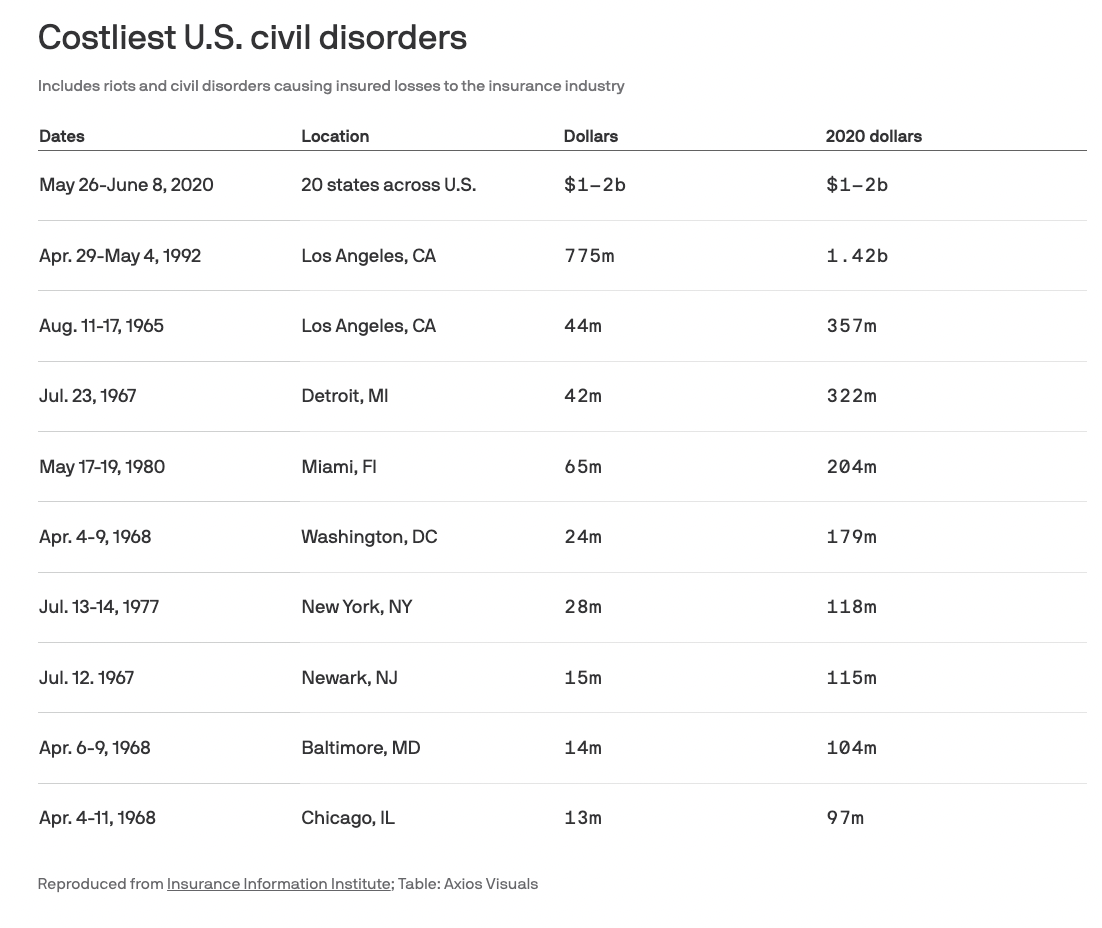
https://www.axios.com/2020/09/16/riots-cost-property-damage
Verisk mapped a timeline of civil unrest in the U.S. between May 24 and October 11, 2020. An article on the website entitled "A dangerous new era of civil unrest is dawning in the United States and around the world" contends the civil unrest index in the United States went up steeply in 2020.
"The United States has seen its standing on the index sharply deteriorate—falling from the 91st riskiest jurisdiction in our Civil Unrest Index in the second quarter of 2020 to the 34th most by the fourth quarter of 2020."

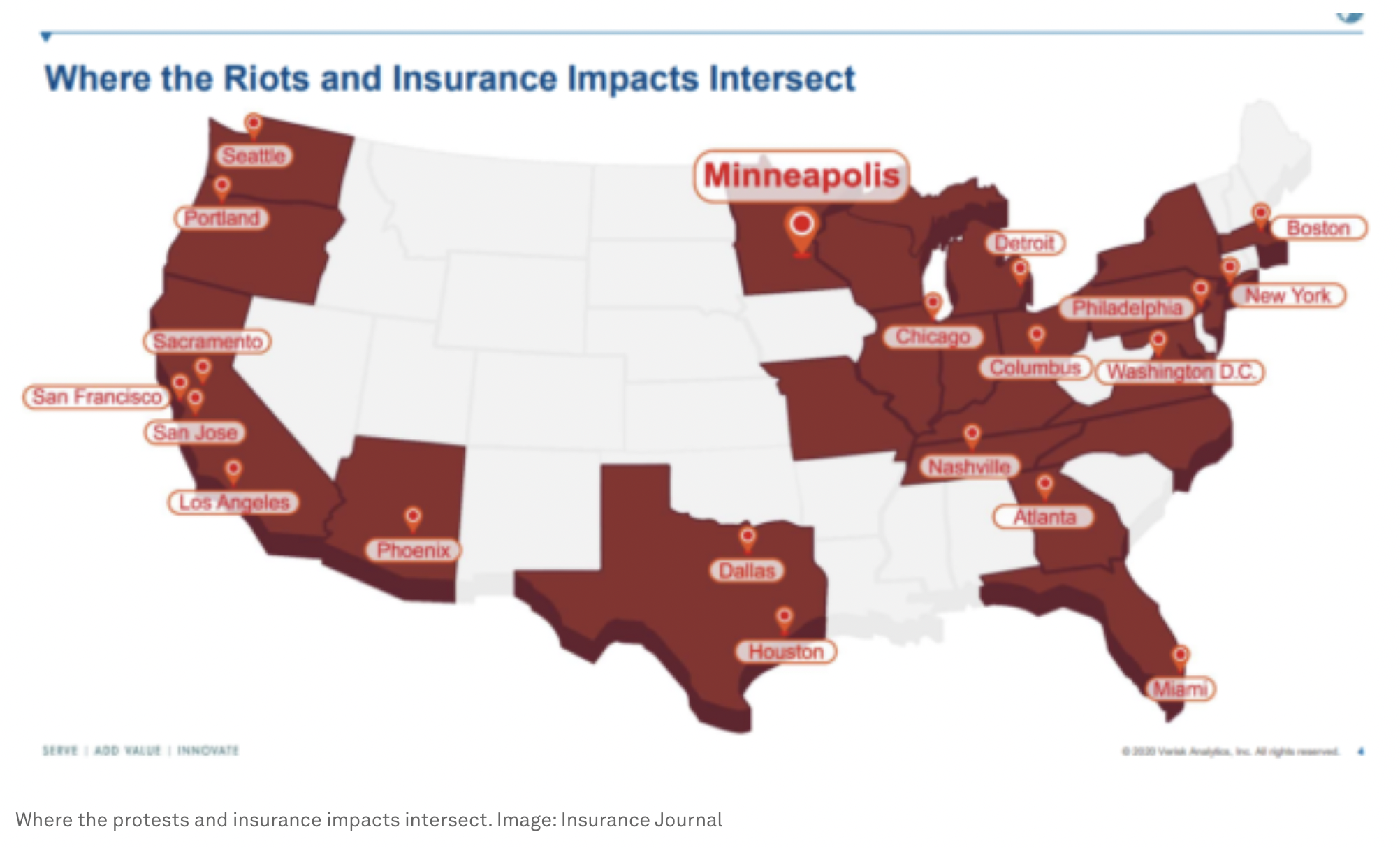
Verisk Data/From WEF website/
AP Reporting: More Than 10,000 Arrests Of Left-Leaning Activists
An AP article from June 2020 attempts to "tally" the arrests and damage caused by the "U.S. protests." According to AP reporting, "More than 10,000 people" were arrested "in protests decrying racism and police brutality in the wake of George Floyd's death." The article also states, "the count grew by the hundreds each day," with "most of the national arrests" concentrated in Los Angeles, New York, Dallas, and Philadelphia," all left-leaning cities where BLM and Antifa protestors might be. "Hundreds were arrested on burglary and looting charges," and for those who rioted in Minnesota, "80 percent were from out of state." Most notably for the purposes of this article, the AP writes that "it is not known how many of the people arrested were locked up."
Other reports at the time describe robust online fundraising that helped pay for bail and legal fees. The NYTimes reported "progressive and racial justice groups" had amassed a "cascade of donations" totaling $90 million for bail funds alone" by mid-June 2020. By June 4, according to the AP, $2 million had been raised to help the "more than 3,000 people arrested in demonstrations since Floyd died on May 25."
According to the reporting in LA, "the Peoples City Council Fund, as of Wednesday night, had gathered more than $2 million for arrested protesters there through the online fundraising platform GoFundMe. More than 46,000 people donated mostly small amounts, some just $10 or $20." The money was slated to go to Black Lives Matter LA and the National Lawyers Guild, "a progressive group that has been defending civil rights activists since the 1930s," according to the AP. Vice President Kamala Harris solicited donations in June 2020 for "those protesting on the ground in Minnesota."
Fear of censoring, online bullying, de-platforming, and demonetization has made it extraordinarily difficult to raise money for J6 defendants, many of whom have been held in jail, unheard of in U.S. history on this scale, and unconstitutional. An overwhelming number of the J6 defendants have felt pressured to accept plea deals for crimes they did not commit.
Legacy Media Bias: Reporting on BLM and Antifa is Unbalanced
It is very difficult to find fair reporting and data on BLM or Antifa riots. Even when the AP discusses the Capitol riots side-by-side, the differences in the rationalizations for each are both mind-bending and common. The Capitol breach, allegedly "fueled by baseless conspiracies" from Americans who were distraught with the 2020 elections, is commonly referenced as one of the worst violent insurrections in our country's history. Kamala Harris compared it to Pearl Harbor and 9/11.
However, BLM violence is wholly justified because of "systemic racism." The "vast majority of [BLM] demonstrations were peaceful." For example, this Jan. 2020 article from the AP comments:
"[T]he two events were fundamentally different. One was an intentional, direct attack on a hallowed democratic institution, with the goal of overturning a fair and free election. The other was a coast-to-coast protest movement demanding an end to systemic racism that occasionally, but not frequently, turned violent.
The mob at the Capitol was fueled by baseless conspiracies propagated by Trump that the election was stolen from him through massive fraud. The rioters acted on the president's direct urging to "fight like hell." They attacked police with pipes and chemicals and planted bombs. They were met largely with restraint by law enforcement.
The unrest that followed Floyd's death included vandalism, arson and looting, but the vast majority of demonstrations were peaceful. Some of the worst violence was in Portland, where thousands of protesters turned out nightly for weeks. Some hurled fireworks, rocks, ball bearings and bottles at federal agents and a member of a right-wing extremist group was gunned down by an Antifa supporter."
Bridging Divides Initiative
While researching civil unrest in America, UncoverDC found the Bridging Divides Initiative (BDI), a "non-partisan research initiative that tracks and mitigates political violence in the United States." The organization is, unfortunately, both typical of our findings and appears to be anything but "non-partisan." None of the organizations below represent conservative bias.
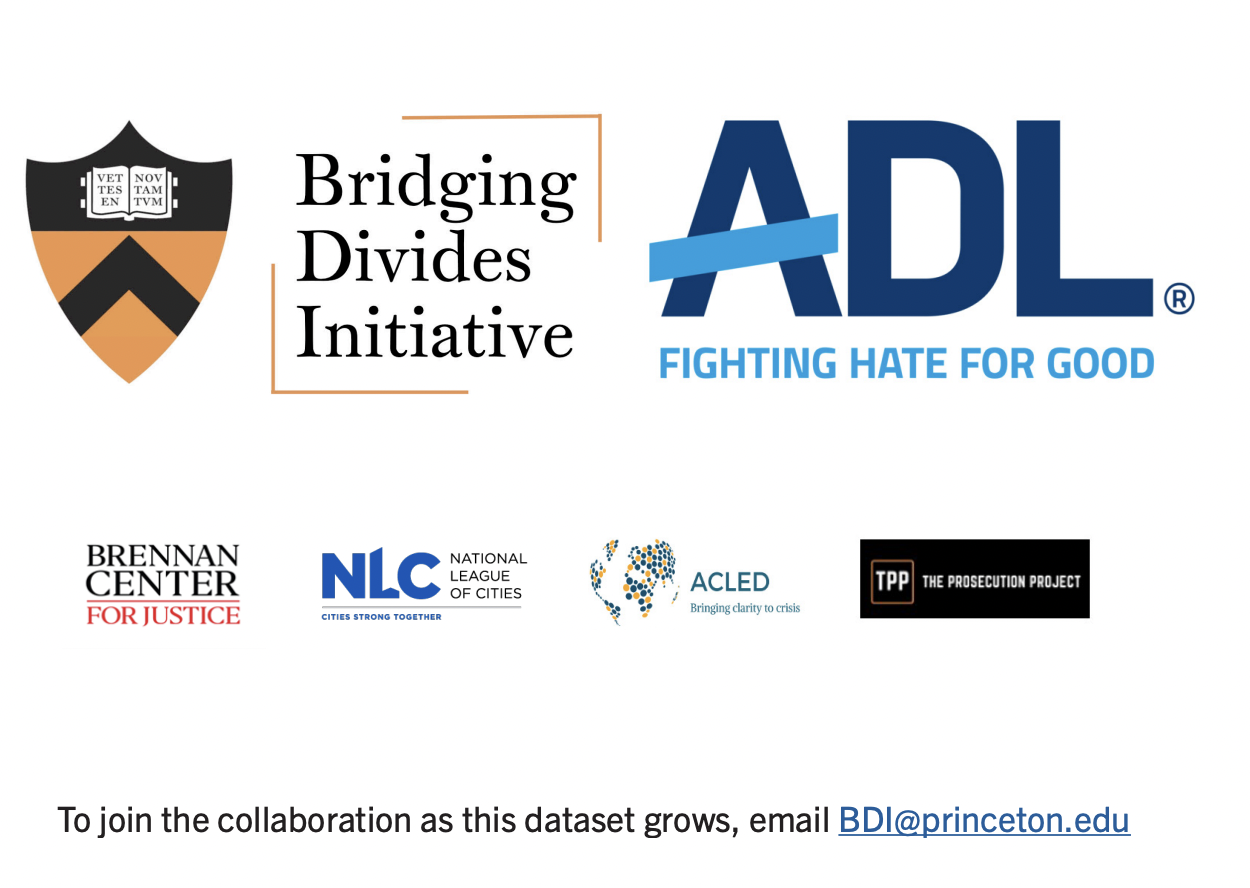 https://bridgingdivides.princeton.edu/sites/g/files/toruqf246/files/documents/Threats%20and%20Harassment%20Report.pdf
https://bridgingdivides.princeton.edu/sites/g/files/toruqf246/files/documents/Threats%20and%20Harassment%20Report.pdf
The BDI Threats and Harassment report provides a dataset and observations of events collected between January 1, 2020, and September 23, 2022. It is a "first-of-its-kind longitudinal study" out of Princeton University to "systematically evaluate events of threats and harassment across the United States using event-based public data."
During the summer of 2020, BDI launched its U.S. Crisis Monitor "to provide the public with real-time data and analysis on political violence." The Crisis Monitor is a joint project with ACLED. The project did not track violence "motivated by personal or purely criminal motives." It is an ongoing "living dataset."
BDI also utilized a dataset produced by ADL, whose motto is "Fighting Hate for Good." While it is primarily an organization that focuses on the defamation of Jewish people, in this case, ADL collected data on three targeted areas of threat to "democratic society...elections, education, and public safety." Maybe it is a coincidence, but these three threat categories have garnered much attention from the current administration as the focus of "right-wing domestic terrorists."
The findings from the initial report seem to support the notion that the grievances that pose the worst threats center on elections, COVID mandates, CRT, and LGBTQ+-related issues.
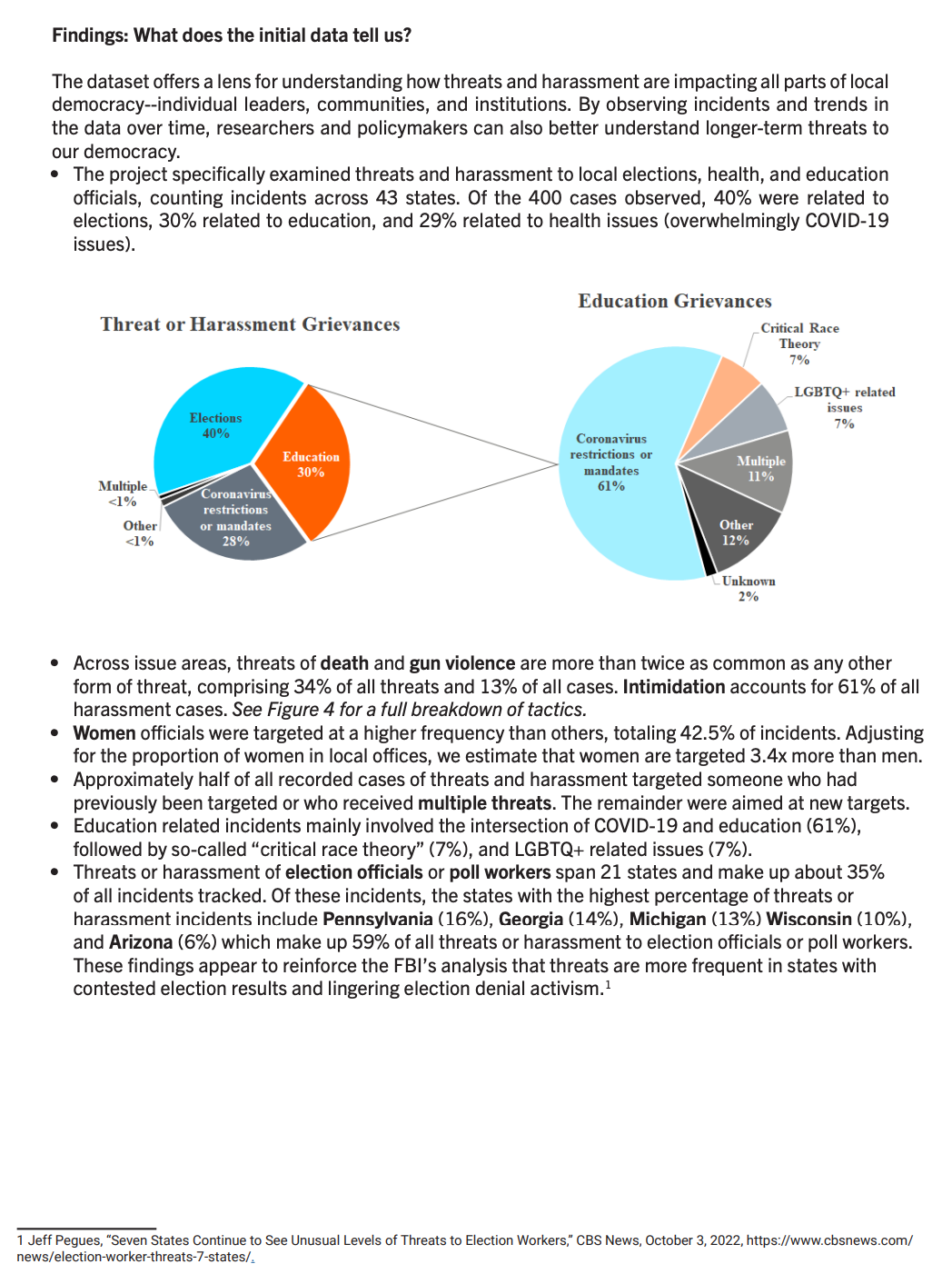
https://bridgingdivides.princeton.edu/sites/g/files/toruqf246/files/documents/Threats%20and%20Harassment%20Report.pdf
One of BDI's partners is ADL, which has a Center on Extremism (COE) that bills itself as a premier tracker of "extremist trends, ideologies, and groups across the ideological spectrum." Among the current articles on its website is one about the "white supremacist and virulently antisemitic" individuals whose National Justice Party allegedly "co-opted" the East Palestine derailment. The article contends that the group is "using the incident to advance their claims that the political system is in place to disadvantage and overlook white people."
Most concerning, however, is the interactive heat map produced by ADL that allegedly tracks, in a non-partisan manner, extremist murders, terrorist plots and attacks, police shootouts, and all manner of White Supremacist incidents.
Let's look at the difference in the map when you filter for ideology. Honestly, it is completely absurd, and the data speaks for itself unless one honestly believes that Right-Wing activists commit most violence in the U.S.

ADL Heatmap/https://www.adl.org/resources/tools-to-track-hate/heat-map
The map below is filtered for the last four categories; Left-Wing, Islamist, Unknown, and Other:
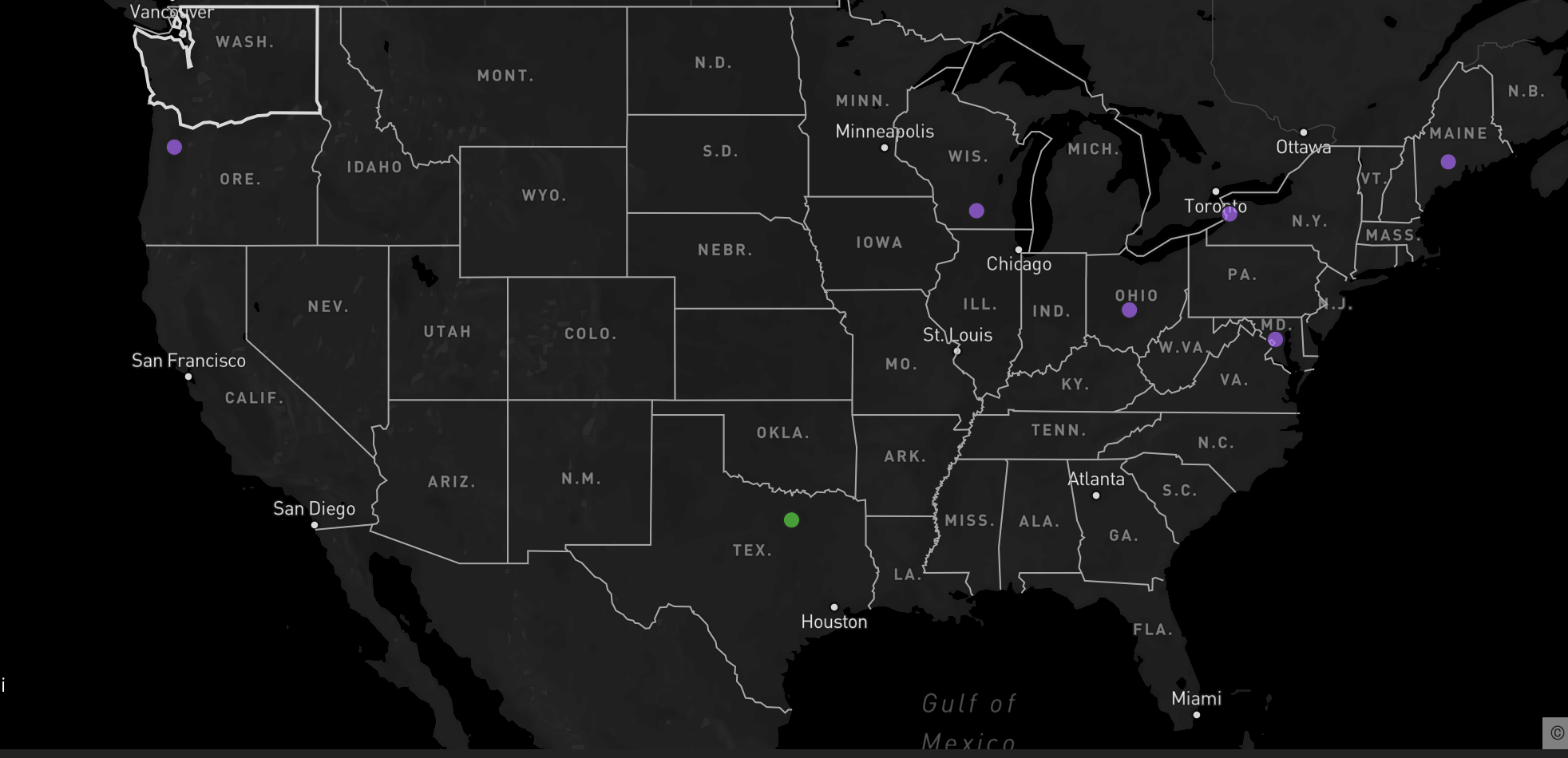
ADL/Heat Map Filtered for Left-Leaning Bias
This second map is filtered for the top three—right-wing violence only. The results? Come on!
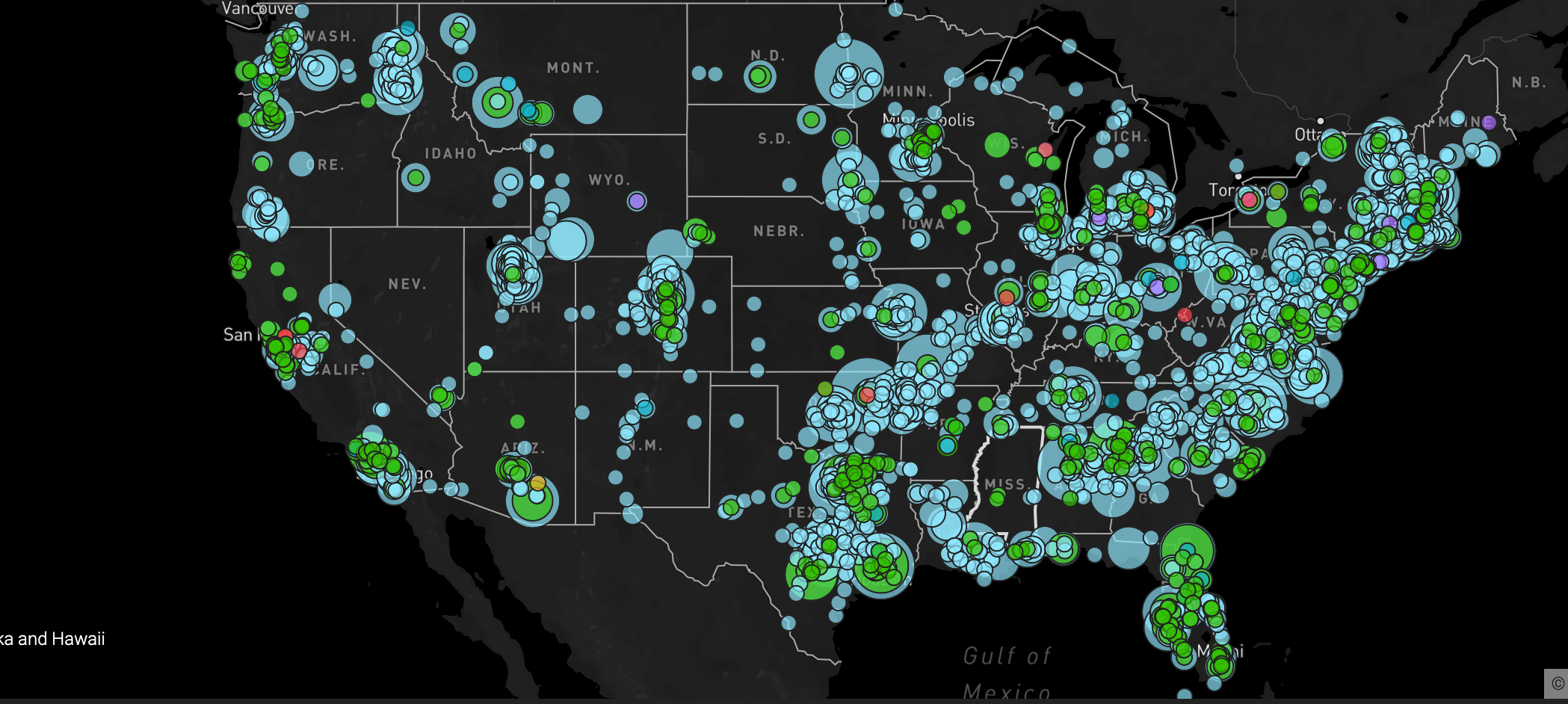
ADL/Heat Map/Right-Wing Violence only
Independent Journalists May be Only Hope
It may be possible to find organizations that track violence committed by the Left; however, it is very difficult to find reporting from legacy media. UncoverDC did find reporting from Michael Tracey in 2020 for Medium. He is not exactly right-leaning, but he did make an effort to report fairly on the events of 2020.
Tracey wrote that the riots of 2020 "exhibited features which belie any easy historical parallel. For one thing, consider their enormous geographic scope." However, he also states that despite the widespread "significant riots," there was very little national conversation or coverage. And despite being a journalist, "attuned to media coverage," it was only when he "personally visited" the affected cities that he "learn[ed] of the damage." Tracey explains:
"These riots exploded with such intensity, across so many jurisdictions, and within such a contained period of time—roughly speaking, a one-week stretch beginning May 28, the day the chaos in Minneapolis/St. Paul reached a grisly apex—that no other instance of past civil unrest seems quite analogous. Complicating matters is that the riots occurred in tandem with a protest movement [BLM] now believed to be the largest ever in U.S. history—one which saw demonstrations, vigils, and general rancor extend even into the most unassuming expanses of suburban and rural America.
And yet, I heard from hundreds of people across the United States and world who were shocked that they'd have never been aware of what happened in Minneapolis/St. Paul, if not for my dinky little Twitter thread. When I visited a month after the peak of the riots, much of this major American metropolis still lied in ruins."
Most Americans do not even use Twitter, by the way. Tracey offers several explanations, including media bias, bitterness toward Trump, and an apparatus that is "extremely reluctant to produce any coverage which might reflect poorly on said "movement" and potentially undermine its moral and political legitimacy." Whatever the reasons are for the lack of data and reporting, his investigation shows a nation of small towns with neighbors and business owners burdened with economic distress, damage to property, and suffering that touched all races and creeds. He states at one point in his column that the "enormity of the scale of the riots" required "drastic local measures to preempt or curtail the chaos" with "next to no attention from national media." In many cases, community members feared being hurt by the very organization they supported.

https://mtracey.medium.com/two-months-since-the-riots-and-still-no-national-conversation-12a7e3e4e006
He spoke with many in these communities. One such interview is below:
"You think you're getting justice, but you're just tearing up your own community," a black woman in her 40s who runs a bakery in a predominantly black part of Milwaukee—in which significant, but conspicuously undercovered riots took place—told me. She added that she would be livid if she found out that her daughter, in her early 20s, ever participated in such activities and was generally condemnatory of those responsible for causing the chaos. (Many people online have made it clear that they don't believe me, but I swear I have not "cherry-picked" any of these interviewees)."
During his travels, Tracey spoke with an immigrant from Sierra Leone, a notoriously war-torn and violent country, who said, "I grew up in a war zone, and I've never seen anything like it."
Tracey then asks an excellent question, "What does it say that these kinds of experiences have barely impinged on the national consciousness?" I would say it's no wonder at all.


